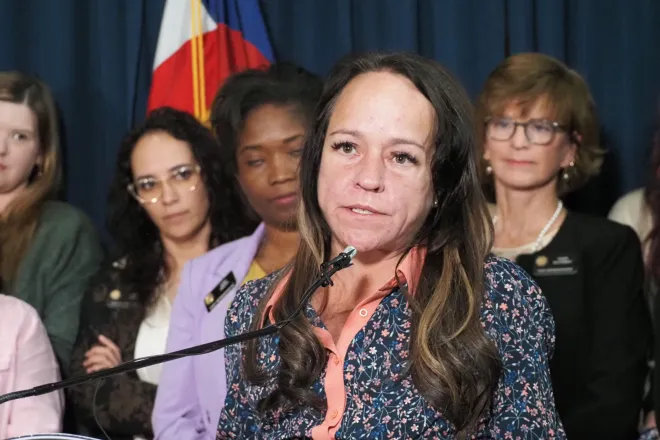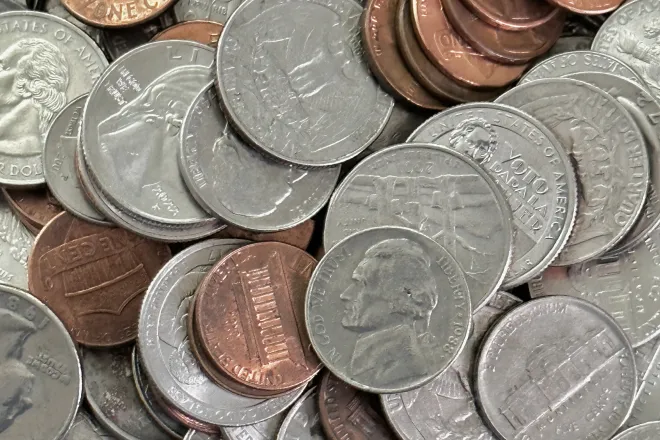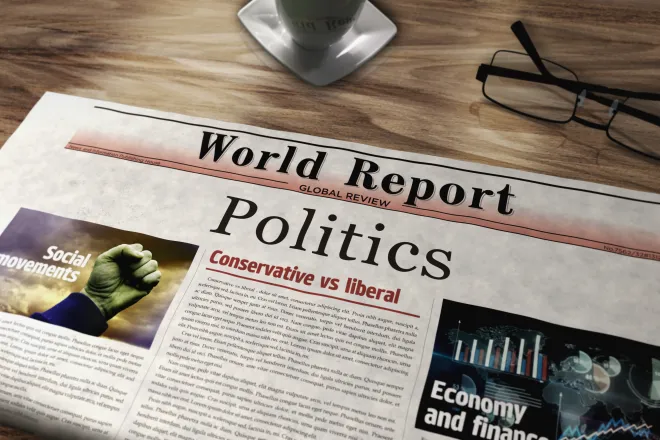
Museum, library programs in Colorado jeopardized due to funding cuts
Museo de las Americas serves about 7,000 students across the Denver metro area every year through its hands-on, immersive cultural workshops.
Those classes range from a lesson on indigenous foods in the Americas, a self-portrait project inspired by Frida Kahlo — the “queen of the selfie” — and a workshop about the Chicano social justice movement in Denver. It’s the type of instruction that teachers might not have the time, materials or expertise to give their students.
“It creates a sense of belonging for most of the Latino students, but also for those who are not, it brings a piece of cultural understanding,” Claudia Moran, the museum’s executive director, said. “It can open that communication when there is a cultural disconnection.”
The curriculum of these cultural workshops, Moran said, needs to be updated to better reflect current state education standards and community needs. The museum explored funding options to hire an educational consultant over the last four years, and was finally awarded a $59,000 grant from the federal Institute of Museum and Library Services last year.
But now that work is in jeopardy after actions from President Donald Trump to shutter IMLS, threatening the federal funding museums and libraries often rely on to advance their operations and research.

© JJ Gouin - iStock-1642293566
Congress created IMLS in 1996 and it has been reauthorized by every president since then, including Trump during his first term.
Trump then issued an executive order in March that essentially dismantled IMLS, along with six other entities, including the United States Interagency Council on Homelessness, the Minority Business Development Agency and the United States Agency for Global Media. The order justified the attempted dissolution as a “reduction in the elements of the Federal bureaucracy that the President has determined are unnecessary” and was directed by the formerly Elon Musk-led Department of Government Efficiency, or DOGE.
After the order, the entire IMLS staff was placed on leave.
But in early May, a federal judge issued a preliminary injunction on the order — as part of a lawsuit Colorado joined — and instructed IMLS to restore staff and grants across the country. That has generally been happening, according to a May 20 status report from the administration.
The result is that for many museum grant recipients, including Museo, they were notified of their grant termination in March and then advised of the preliminary injunction and reinstatement in May. Theoretically, they should be able to pull down reimbursement funds from their grant, but the situation has created a sense of uncertainty.
“We’re in a little bit of a tricky situation where I’m not quite sure how much we can actually do without the confidence that we would be reimbursed for the work,” said Jennifer Neale, the director of research and conservation at the Denver Botanic Gardens.
Institutions across Colorado were awarded about $4.3 million in IMLS grants, most of which require matching funds from the museum or library, for the current fiscal year. That ranges from about $3.2 million to the Colorado Department of Education to increase access to library services in the state to about $23,000 to the Broomfield Veterans Museum to create a new digital display about local veterans. It includes $25,000 for the Western Museum of Mining and Industry to design a new exhibit about non-white miners, about $250,000 for the Denver Art Museum to study and implement accessibility prototypes, and over $330,000 for History Colorado to expand its digitized, online collections for students.

© iStock - NiseriN
The grants often target projects that are difficult to fund, Neale said. A nearly $250,000 grant at the Botanic Gardens, for example, is intended to advance a conservation effort for alpine ecosystems in North America. The money was meant to help the garden purchase a seed X-ray machine, hire developers for an online database and pay for seed collection in often-remote parts of the alpine ecosystem.
“At the Botanic Gardens, our mission is to connect people with plants. And we do that, broadly, by trying to help understand the biodiversity around us and how to conserve it and preserve it,” Neale said. “It might not have a super obvious economic value, there is economic value to it in terms of, you know, providing people with mental health, and obviously there’s the whole thing of we don’t know where our next medicines or foods are going to come from.”
The garden bought the X-ray to examine its own alpine seeds and has a software developer under contract, but Neale said she is anxious moving forward with the project knowing that the entire endeavor could get terminated. The garden is holding off on its original plan to contract with partner gardens to conduct seed collections this summer.
“It doesn’t leave just us in limbo, but it leaves all of them in limbo because they’d originally been planning on doing these collections and receiving the funding for it, and then it got terminated,” she said. “In the botanic garden community, people have a pretty low risk tolerance, because we’re not dealing with really large budgets where we can just cover several thousand dollars if federal money doesn’t come through to pay for it.”
In the botanic garden community, people have a pretty low risk tolerance, because we're not dealing with really large budgets where we can just cover several thousand dollars if federal money doesn't come through to pay for it.
At the Museum of Art Fort Collins, Executive Director Lisa Hatchadoorian said she worked to draw down most of a $55,000 grant ahead of the start of the new presidential administration. That money was slated for a staff member and physical upgrades to the MoA For All space, which is meant to host classes, field trips and camps. The program also allows free admission for college students, children, SNAP recipients and military personnel.
“When I saw what was happening in the beginning of 2025, I put in the payment request for the bulk of it — the fixtures and the furniture — which came out to about $15,000. We basically got that with the skin of our teeth, because I thought ‘We need to get this in before the inauguration, just in case things start to turn south,’” she said.
There’s about $6,500 left in the grant, Hatchadoordian said.
“We’re trying to fundraise in other ways to make up the difference. There’s not much else we could do. We had to either make it up or we cut,” she said. “If funding dries up, whether that’s through IMLS or other sources, then the program would cease to exist, and that would not be beneficial to the community.”
Museum leaders are looking to other funding sources, including donors and additional grants from private organizations. But the dissolution of IMLS, as well as funding cuts to agencies like the National Endowment for the Arts, could result in a large uptick of museums competing for the same amount of private funding.
Chelsea Pennington Hahn, the director of the Lafayette History Museum, said IMLS grants allow small museums to take “big steps towards best practices” in preserving history. A $47,000 grant in 2023, which she said was about two-thirds of the museum’s annual budget, allowed it to hire a collections manager to take a professional inventory of the museum’s artifacts and pay a handful of interns.
The museum had $300 left in that grant when Pennington Hahn received the IMLS termination notice, but she sees the threat of federal funding cuts as a danger to the health of small, community-based museums.
“These small museums that do really important work of preserving the stories of the small towns and cities that make up Colorado and the American West,” she said. “Without the grants, we will still exist. We will still keep doing our best, but those grant programs allow us to make major strides towards growing and getting better for the community.”

















